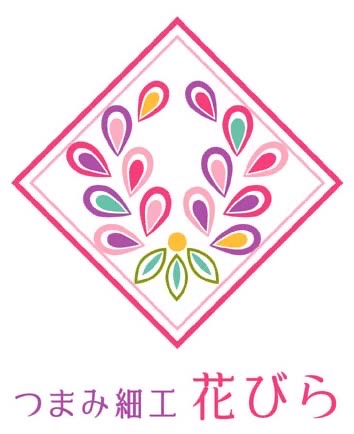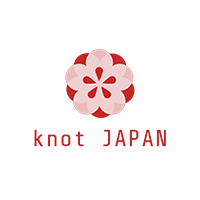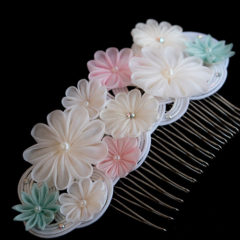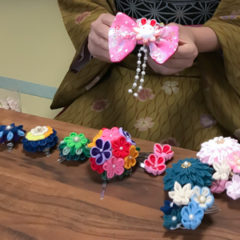
The famous Tsumami-zaiku people will talk about their thoughts about Tsumami-zaiku.

Profile:
Tsumami zaiku Hanabira 
2011 April Started Tsumami-zaiku blog, showing works and how to make it.
2011 Nov. Started Tsumami-zaiku class and correspondence class.
2015 May Published a book “Wonderful Tsumami-zaiku” (Boutique Publishing)
2018 April Published a book titled “Pretty Flowers of Tsumami-zaiku that You Can Make Right Away with the Appendix” (Boutique Publishing).
2021 Jan. Published a book “Pretty flowers of Tsumami-zaiku, revised edition”.
blog:
https://ameblo.jp/flowerflakes/
Online shop: https://flakesofflower.stores.jp/
Instagram:
https://www.instagram.com/mina.goto/
Facebook:
https://www.facebook.com/flakes.of.flower.goto/
Twitter:
https://twitter.com/minagoto_flower

Q1. How did you start working on Tsumami-zaiku? (Or did you get involved?)
When I was in elementary school, my grandmother taught me how to make tsumami zaiku. I made “Sata” tsumami style “small box of flowers” for my summer vacation homework, and enjoyed self-decorating small cards and doll houses.
After my marriage, the Tohoku earthquake struck in March 2011, and my husband who was from Kansai evacuated to Osaka with our child. Since I was unable to leave Tokyo for work, I had nothing to do at home, so I began to enjoy posting my Tsumami-zaiku works on my blog and communicating with people who shared my hobby.
At first, I simply showed how to make items with text and photos on my blog, but after receiving requests for more details, I decided to hold classes and correspondence courses.
At that time there were not many classes or books available, I received a number of applications for the class. I also enjoyed running the class while communicating with students from far locations via e-mail and SNS.

Q2. What do you focus on when you teach, and what is the key factor?
I truly believe that what is most important thing is not the fact that the instructor has “taught”, but that the students “understood”. Therefore, even when I explain one thing, I explain the reasons, benefits, and differences from other approaches so students can understand from multiple perspectives.
The textbook is also important. The first piece which covers basic technique includes 13 pages but it is explained in detail with frame-by-frame photos and diagrams.
It is also important in teaching to counter the fact that “people forget.” By building up from the beginner’s course, the course structure is designed so that students can review the previous work in the next work. I provide the same detailed textbook for both correspondence and classroom courses so that students can easily review even after a while from their course.
In addition to these basic principles of teaching, the instructor’s course includes work on daily schedule management, handling complaints, and building a cancellation policy. Through this work, it helps them to set their own goals based on their own lifestyle and philosophy, and to move forward toward their goals step by step.

Q3. What is the attractiveness of Tsumami-zaiku for you?
The materials are easily available, the techniques are simple, and by combining them, a variety of expressions are possible. I have not yet been able to formulate the methods I want to try, but I will continue to develop my skills.

Q4. What do you think about the future possibilities of Tsumami-zaiku?
Because I am from the countryside, it was difficult to find people who knew about tsumami-zaiku 30 years ago, so I had no idea that it would be widely known. As of the beginning of 2021, #tsumamizaiku on Instagram has exceeded 400,000 posts.
Tsumami-zaiku has had a long tradition since the Edo period, and its methods and materials have developed over time. I feel current state of the art is probably the biggest trend in this field so far.
There is something about tsumami-zaiku that makes you keep on making. Just like knitting or embroidery, once you start, you can’t stop.
Because of its appeal, I believe that Tsumami-zaiku will not be just a ” trend ” but will develop into one of the major handicrafts that everyone knows. I think everyone will see it at the Shichi-Go-San and coming-of-age ceremonies, and I expect that it will be featured more often in the future as something more familiar.

Q5. What would you like to accomplish as a teacher in the future?
Rather than making a bunch of the same items, I have a strong desire to try out new ideas and designs that I have never seen before. I would like to continue to do trial and error to create beautiful, efficient, and interesting designs and share them with everyone.
In addition, as I have been doing in the past, I would like to take the challenge of breaking down the background ideas of design and conveying them in theory even further.









